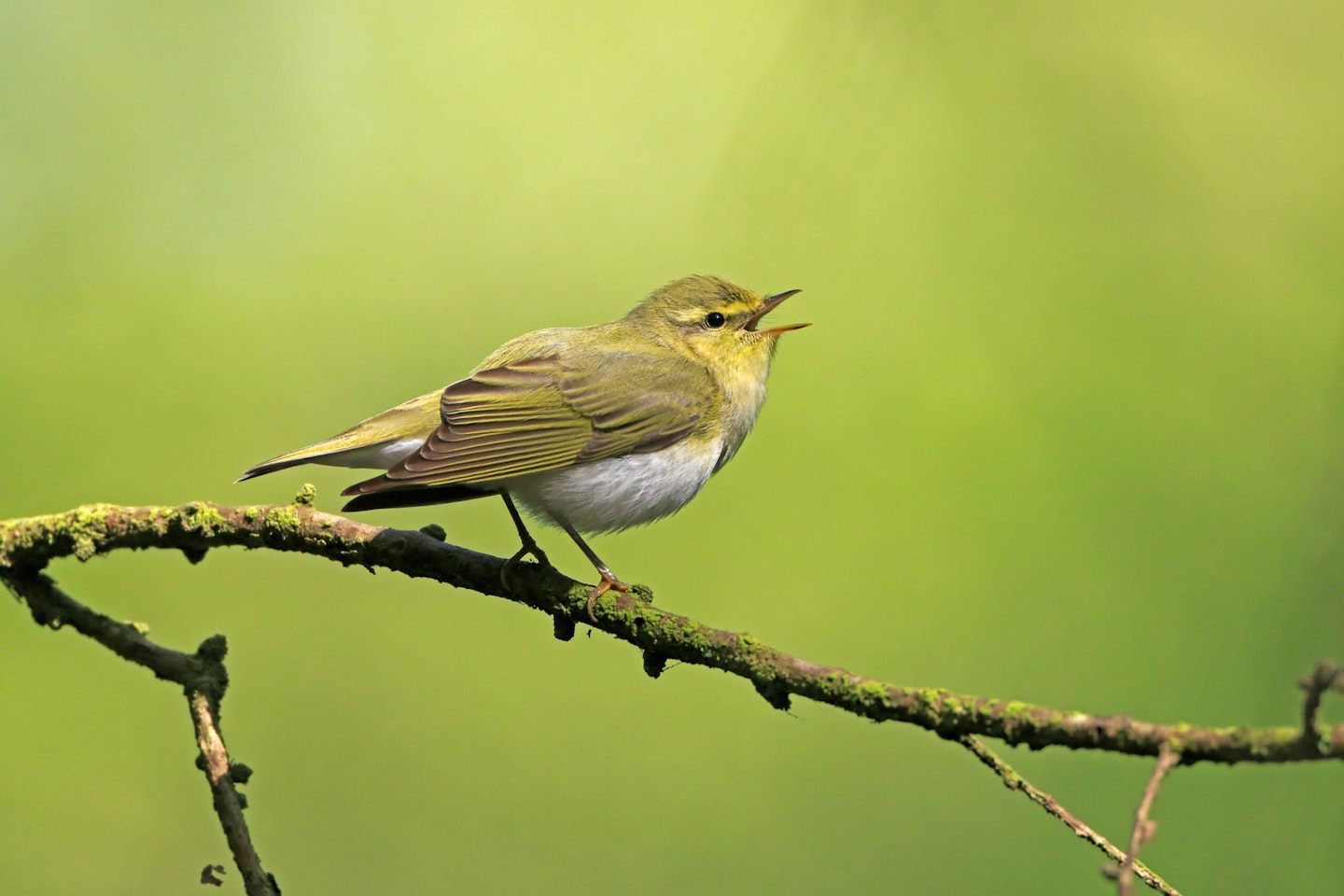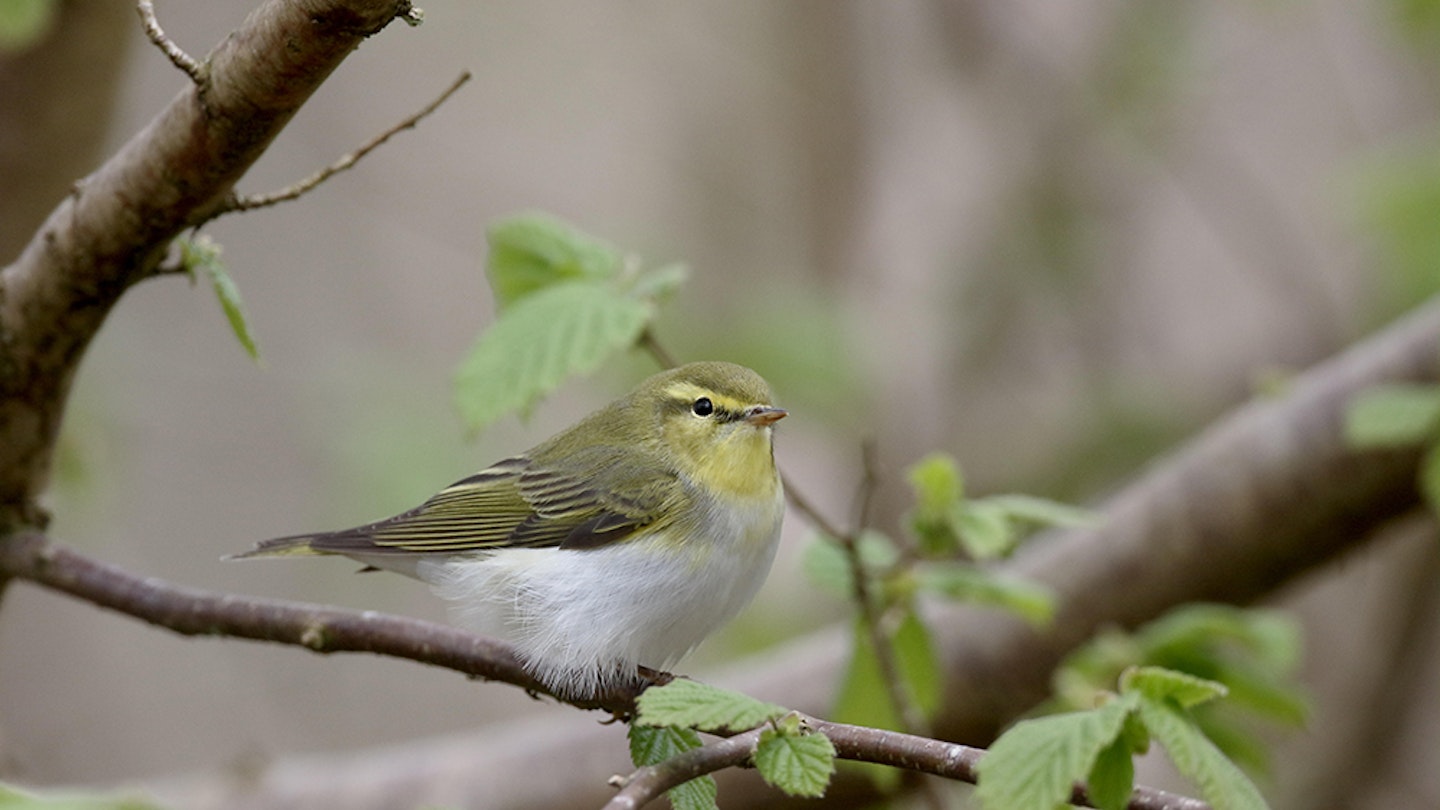May is an unbeatable month, a month which many of us having been yearning for through the colder seasons. The daylight is long, the bird song at its peak and there are so many exciting birds on the move or simply back where they belong. Make the most of May, perhaps with the addition of these five cracking birds.

Wood Warbler
Along with Redstart and Pied Flycatcher this is one of the classic breeding migrants of the western woodlands. Like so many of our small birds the Wood Warbler usually betrays its presence by song, in this case a mix of a repeated, sad-sounding ’pew’ and an accelerating shimmering song on one note. The Wood Warbler is much more brightly coloured than the somewhat similar Willow Warbler and Chiffchaff, with a brighter green back and very long wings, pure white belly and lemon yellow throat and upper breast. Often found in Beech woods.

Whimbrel
The smaller cousin of the similarly patterned Curlew is about the size of a godwit, with a famously striped crown, and a shorter bill than Curlew, with a distinct kink down near the tip. Whimbrels are mainly seen as summer visitors and passage birds (some 500 pairs breed, mainly in the Northern Isles and Outer Hebrides), and in May pass through even the centre of the country, often betraying their passage with a rippling whistled flight call.

Black Tern
One of the great joys of spring is encountering passage birds such as marsh terns, the commonest of which is the Black Tern. It is not a UK breeder, but always passes through during the spring and autumn. Spring is the best, though, as the adults are wrapped in dark blackish-grey on the underparts and head, with paler grey upperparts. Buoyant and masterful in the air, Black Terns swoop down to pick insects and other morsels from the water surface, mid flight.

Corn Bunting
Sadly, like many birds associated with farmland, the Corn Bunting is undergoing a serious population decline (now about 11,000 pairs remain). Big, dumpy and streaky, the Corn Bunting is not a great looker, but it has a very pleasing song, famously consisting of a huge number of jumbled notes, like the jangling of keys, Now is the time to go and listen for the song, from a fencepost, overhead wire, hedge, tall weed or bush in open country where pesticides haven’t yet destroyed the buntings’ food source.

Knot
Though the other four birds here can be a pain to see, the Knot presents no such difficulties. It is, of course, a bird renowned for producing the wader equivalent of Starling murmurations, seen in vast numbers around The Wash and some other sites. But, in May, it is also a bird which can appear in small numbers at inland sites in the most delightful breeding plumage. In common with godwits and Curlew Sandpiper, summer plumaged Knots have lovely brick-red underparts and are a real treat to the eye for wader-lovers. There are of course, many waders which also pass through the country heading to arctic breeding grounds in late April, but none is more handsome than the Knot.
